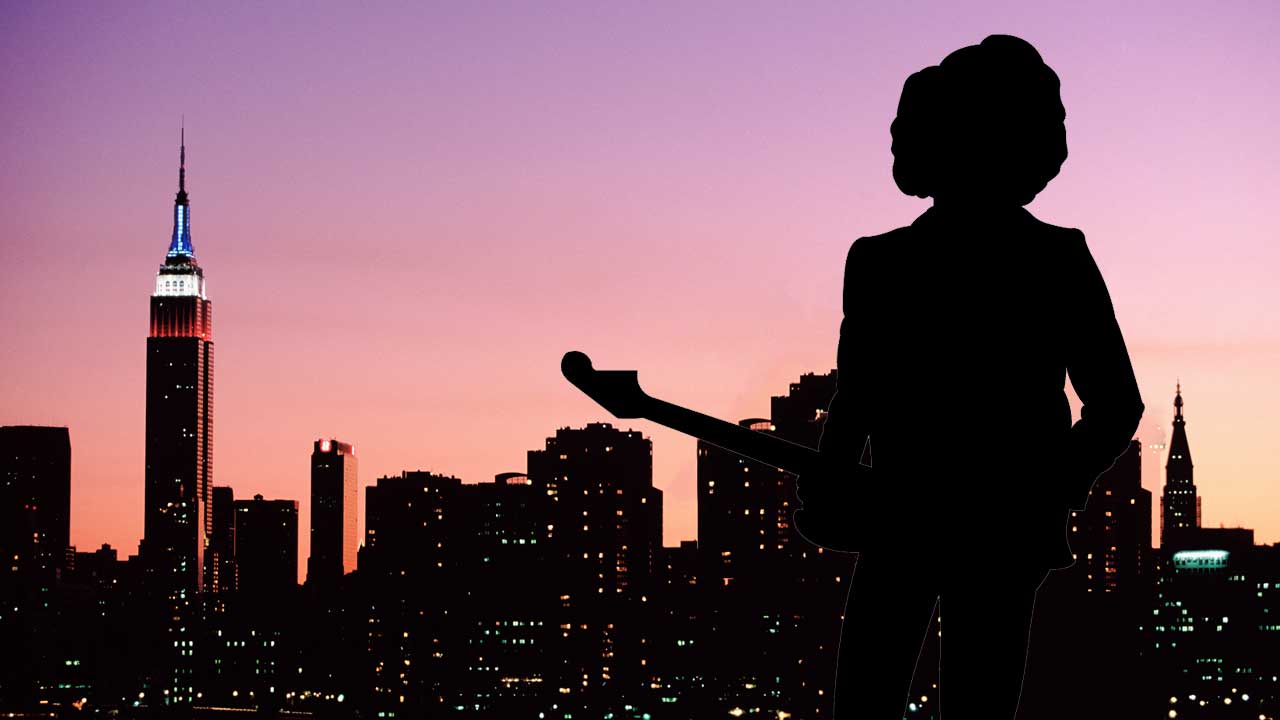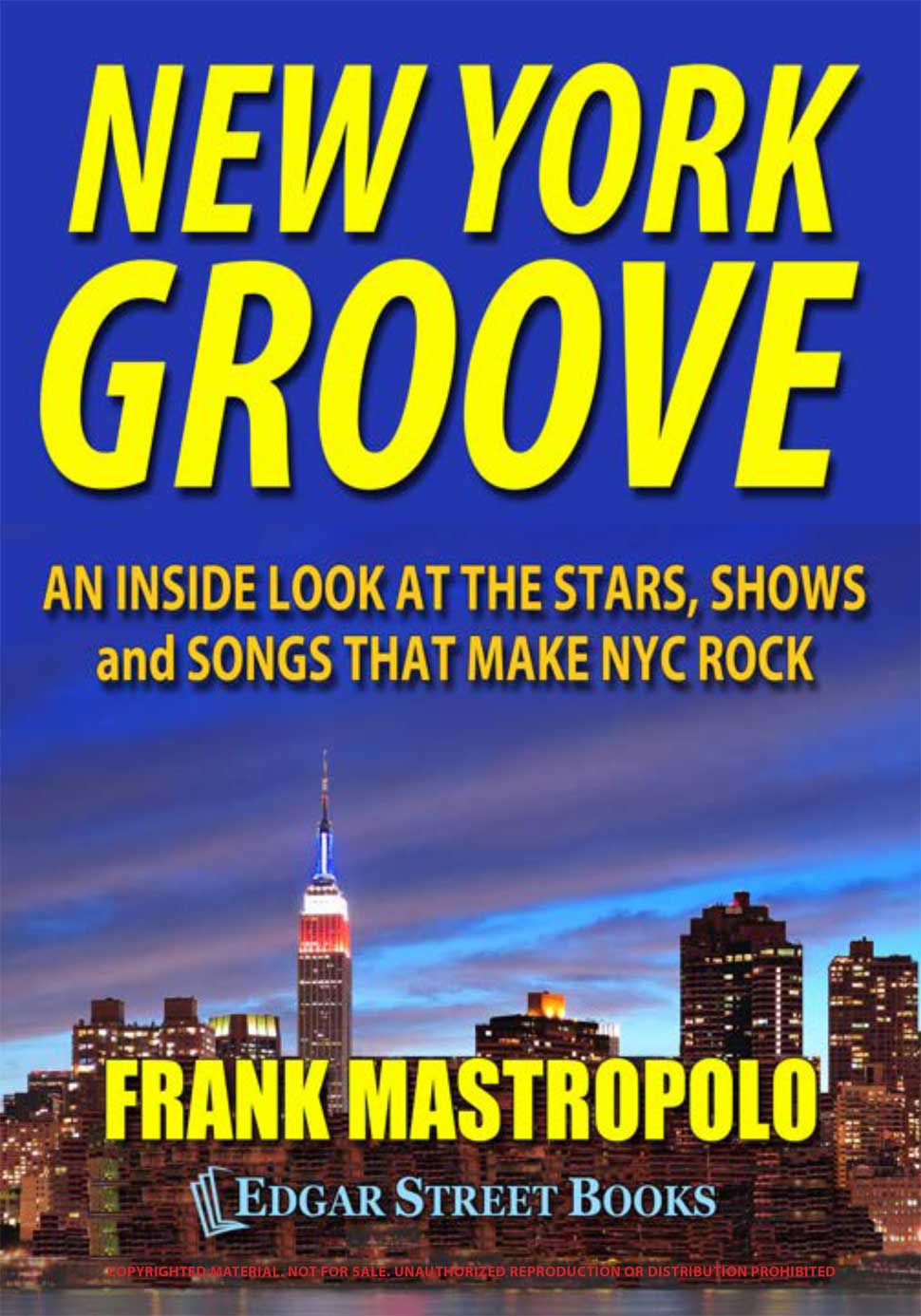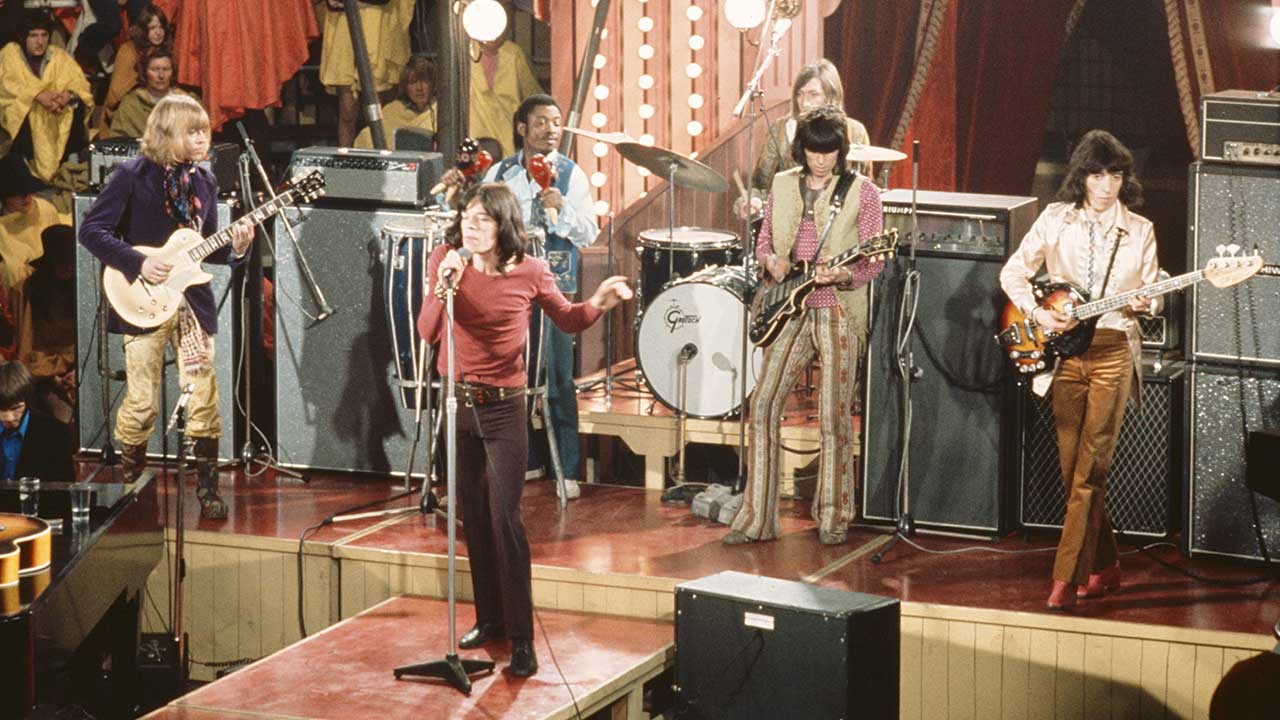10 historic New York gigs that spun the world of rock'n'roll on its axis
From Bob Dylan to Jimi Hendrix and Nirvana, these 10 shows shook the city that never sleeps

Frank Mastropolo's new book New York Groove: An Inside Look At The Stars, Shows, And Songs That Make NYC Rock tells the inside stories of the artists, writers, DJs, and impresarios who came together in Manhattan to make rock history from the 1950s to today.
The book also takes the reader behind the scenes of legendary New York gigs at Fillmore East, Madison Square Garden, GBGB, the Bottom Line, Central Park, and the Apollo Theater. Below, Mastropolo shares 10 of the most important New York shows ever.

Bob Dylan's first big gig at Gerdes Folk City
In early 1961, Bob Dylan performed for loose change in Greenwich Village basket houses. Dylan also took part in Monday hootenanny nights at Gerdes Folk City, the city’s top folk club, at 11 West Fourth Street. Audience reaction and entreaties by friends persuaded Gerdes owner Mike Porco to hire Dylan to open for bluesman John Lee Hooker.
The two week engagement that began April 11, 1961 was Dylan’s first major gig. Dylan was paid $90 a week for playing six nights a week. According to New York magazine, Dylan played a five-song set: House Of The Rising Sun, Song To Woody, Talkin’ Hava Negeilah Blues, and two others, identified only as an “unknown Woody Guthrie song” and “a Black blues.”
James Brown records Live At The Apollo
Of all the venues where James Brown performed around the world, none is more synonymous with him than Harlem’s Apollo Theater. Brown first played the Apollo in April 1959, when he opened for his idol, Little Willie John. More than 600 performances would follow.
Brown recorded several live albums at the theatre but the first, Live At The Apollo, took soul and funk music mainstream. Recorded on October 24, 1962 and released in 1963, Live At The Apollo spent 66 weeks on the Billboard Top Pop Albums chart, peaking at number two. In 1998, the album was inducted into the Grammy Hall of Fame.
The Beatles on the Ed Sullivan show
Ed Sullivan hosted the most popular variety show on television in 1963. Passing through London’s Heathrow Airport on October 31 that year, Sullivan spotted a horde of enthusiastic Beatles fans awaiting the group’s return from Stockholm. “Who the hell are The Beatles?” Sullivan asked his entourage.
Sign up below to get the latest from Classic Rock, plus exclusive special offers, direct to your inbox!
Sullivan subsequently signed the group to appear on three consecutive Sundays in February 1964. The Beatles opened with All My Loving to the screams of the audience. The crowd quieted a bit as Paul McCartney followed with the ballad Till There Was You. Pandemonium ensued as the first segment closed with She Loves You. The Beatles returned in the second half of the show with I Saw Her Standing There and their number one hit, I Want To Hold Your Hand.
The Rolling Stones at Carnegie Hall
The Rolling Stones concluded their first American tour in 1964 with two shows at Carnegie Hall. Disc jockey Murray the K hosted the concert, which featured American pop group Jay & The Americans as the opening act.
The (Sydney, Australia) Sun-Herald reported, “News from the United States has it that the Rolling Stones are all set to be the world’s next sensation. Ten days ago in New York, the walls of staid old Carnegie Hall shook and thundered beneath their onslaught. A near-capacity crowd went wild with delight.”
Jimi Hendrix discovered at Café Wha?
Jimi Hendrix’s career had stalled by 1966. The guitarist was frustrated with gigs as a sideman for artists that included Little Richard and the Isley Brothers. Hendrix, as Jimmy James, formed Jimmy James and the Blues Flames and performed in clubs around town. His fortunes changed when fashion model Linda Keith convinced bassist Chas Chandler of the Animals to catch Hendrix at Café Wha?
Chandler, aware that the Animals would soon break up, hoped to move into artist management and record production. Hendrix’s performance on July 5, 1966 at Café Wha? left Chandler awestruck. He immediately put into motion plans to bring Hendrix to London and help him become a superstar.
Janis Joplin opens the Fillmore East
Fillmore East opened its doors in the East Village on March 8, 1968. Bill Graham’s creative mix of musical genres was evident in the hall’s first show. Fillmore East’s debut featured blues guitarist Albert King and folk rock’s Tim Buckley. Headlining the show was San Francisco’s Big Brother & the Holding Company, fronted by Janis Joplin.
"Janis was really powerful and really insecure at the same time," said Big Brother guitarist Sam Andrew. "So at that Fillmore East opening, she was frantic, it was like obsessive-compulsive, asking me how she did over and over again. She wouldn’t stop, like the needle got stuck." Joplin would leave Big Brother that December.
The Who play Tommy at the Metropolitan Opera House
Herman Krawitz, the Metropolitan Opera House’s assistant manager who booked the show in July 1970, discounted those who believed The Who's Tommy was too lowbrow for the prestigious venue. It was the first time a rock band had performed at the Met. “All productions of quality come to the Met,” Krawitz told the New York Times. “Tommy has been given in the United States before, last October at the Fillmore East, but never in an opera house.”
Undaunted by the history of the Met, The Who performed with their usual energy. The first set ended with Pete Townshend throwing his guitar into the audience. “We were young and full of testosterone,” singer Roger Daltrey recalled in the (San Jose, CA) Mercury News. “It was much more of a physical, rock‘n’roll type of event.
Concert for Bangladesh at Madison Square Garden
Indian sitarist Ravi Shankar contacted his friend, George Harrison, in early 1971 with a plea. Refugees from East Pakistan streamed into the country of Bangladesh in the wake of a cyclone and the Bangladesh Liberation War, and corrupt Indian officials hijacked aid shipments of rice intended for the refugees. “I got tired of people saying ‘but what can I do?’” Harrison wrote in I, Me, Mine. “Also, the reluctance of the press to report the full details created the need to bring attention to it. So the song Bangla Desh was written specifically to get attention to the war.”
Harrison then began to put together a benefit concert in New York, first billed as “George Harrison & Friends.” A superstar lineup of musicians came together that included Eric Clapton, Ringo Starr, Leon Russell, Billy Preston, and Badfinger. It would be Bob Dylan’s first US performance in three years. A the triple album of the concerts was released in December 1971 and became a worldwide Top 10 hit, and a film of the concerts was released in 1972.
Simon & Garfunkel in Central Park
Central Park was deteriorating by the early 1980s. The city did not have the $3 million required for renovation. A plan was devised to raise money with a concert in Central Park that would be televised by HBO and recorded for a live album. Simon & Garfunkel were an ideal choice, except they had only performed together sporadically since recording the 1970 album Bridge Over Troubled Water, and The Parks Department initially asked Simon to perform solo.
The concert – held on September 19, 1981 – brought an estimated 500,000 people to the Great Lawn, and was a critical and financial success. The Concert in Central Park album was released in February 1982, selling more than two million copies, and the concert’s success led Simon & Garfunkel to briefly reunite for a world tour in 1982.
Nirvana at the Pyramid Club
Nirvana’s first New York appearance was at the Pyramid Club on June 18, 1989, three days after the release of their debut album, Bleach. The performance was marred by a drunken fan who climbed onstage during Floyd the Barber, only to be shoved off by members of the band.
Nirvana’s second visit to the Pyramid came in 1990 when they gave what many, including the band, felt was a mediocre performance. Many in the audience heckled the band, though Iggy Pop cheered, and he would cite the performance in his 2020 Rock and Roll Hall of Fame induction speech for Nine Inch Nails. The band was so frustrated by the Pyramid Club’s poor sound quality and their own playing that they ended the show by smashing their equipment. Bassist Krist Novoselic was so upset that he shaved his head bald in the New Jersey motel where they were staying.

Frank Mastropolo is a veteran journalist, photographer, and former ABC News 20/20 producer, winner of the Alfred I. DuPont-Columbia University silver baton and the Society of Professional Journalists' Sigma Delta Chi award. He is the author of Ghost Signs: Clues to Downtown New York's Past and Fillmore East: The Venue That Changed Rock Music Forever.
